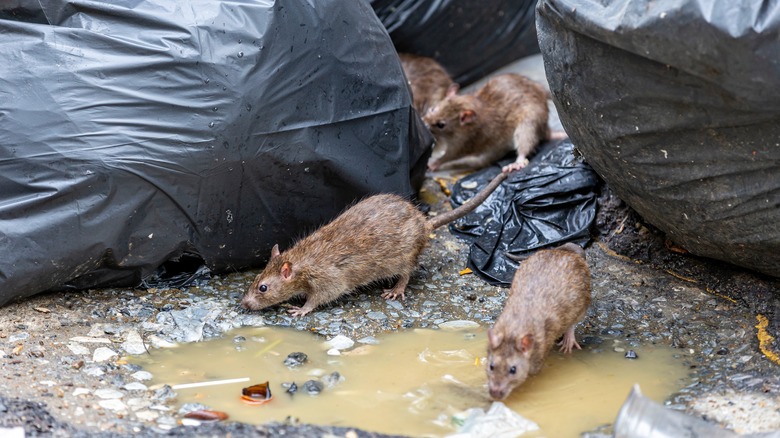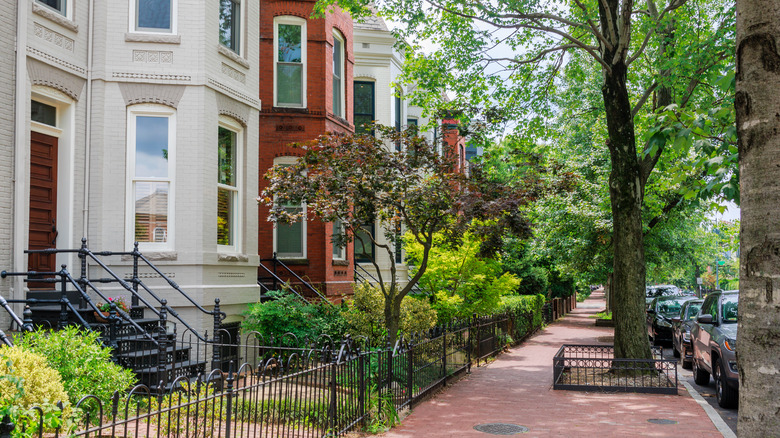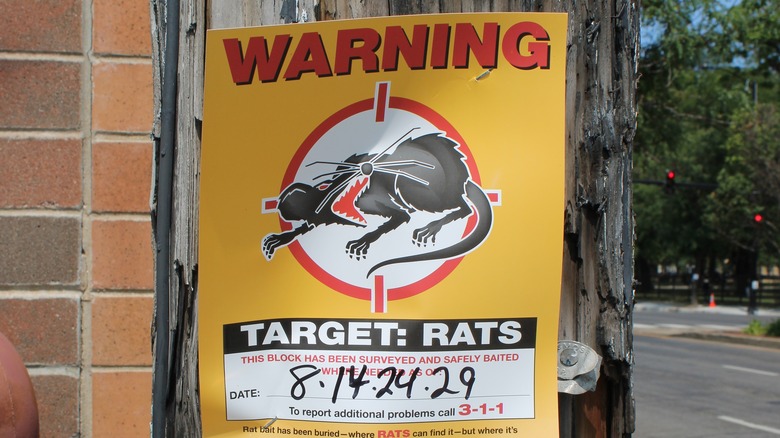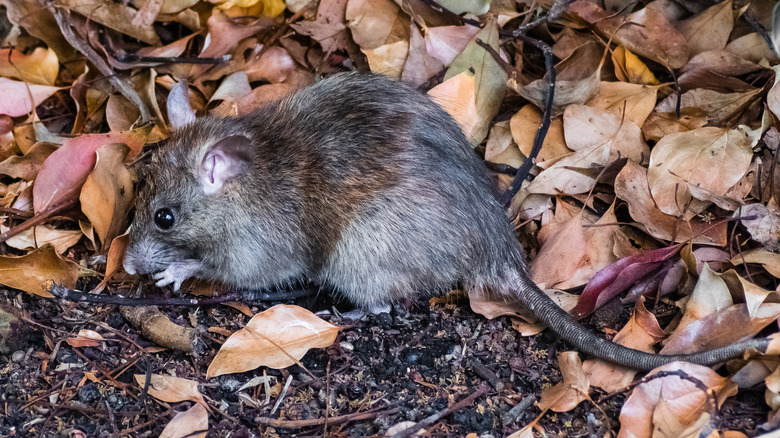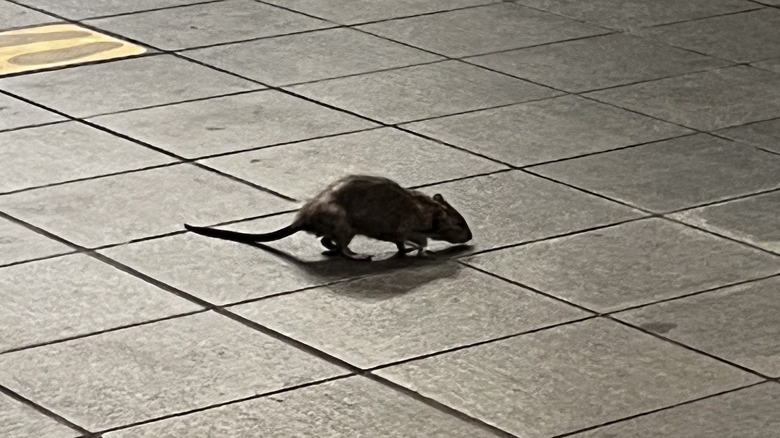The 5 Most Rodent-Infested Cities In America
Pests are a problem anywhere in the United States. However, some locations are more likely to have rodents than others. Usually crowded cities, with an excess of trash and litter lying around, are hotspots for rodents like rats and mice, full of warm places and food for them to enjoy. Some cities are worse than others when it comes to an abundance of these furry pests, though.
Leading pest control companies Terminix and Orkin publish an annual list based on the cities that used their services the most, commercially and residentially. We used their findings to compile a list of the top five most rodent-infested cities in America, so if you are averse to crossing paths with these critters you might want to factor these rankings into your travel plans.
When you think about rodents causing problems in homes, restaurants, and other businesses, rats likely come to mind first. They are definitely one of the most common and biggest problems in cities, but not the only ones. Different species of mice are also problematic, especially in homes where they search for food and can fit into the smallest of openings. Also, though rare, squirrels can make themselves comfortable in your home, attracted by the warmth and relative safety of your house. All three types of rodents might be cause to call pest control to come and clear out your home or business. However, for this article, the focus is primarily on rats and mice.
Washington D.C.
It's not much of a surprise that the nation's capital is on this list. Washington D.C. is heavily congested, packed to the brim with people working, living, and visiting the area. It's such a busy city that it's also one of the worst places to find parking in the country. In Washington D.C., house mice and brown rats are the two most common rodents you'll find around your home and in the streets.
Gerard Brown, D.C. Health's Rodent and Vector Control Program Manager, told WUSA9 that the patrol received more than 11,300 calls about rat-sightings in 2021. The number jumped pretty dramatically that year; in 2020, there were only about 7,500 complaints. A lot of the problems arose thanks to COVID shutdowns. Changes in how businesses work and more people staying home led to an abundance of trash, which is what rats and mice depend on for food. With more to eat, the cities were able to hold a greater population of rats, which then had babies and created an even larger group of these pests. With each rat able to give birth to around 100 babies a year, it's easy enough for a population to increase dramatically once given access to so much food and space.
Because rodents are so common here, those who live in the area want to take steps to deter any mice or rats that are eager to find a new food supply and home. Throwing away trash regularly, especially any with a strong odor, closing off any openings the rodents could use, and keeping pantry foods in airtight containers are some of the best and easiest methods to deter pests from staying in your home.
Chicago, Illinois
Chicago is not only a major urban city, with one of the best Chinatowns in all of America, but is also considered the home of the most well-connected airport in all of the United States. With so many people passing through and living in the space, generating trash and leaving food around, it's no surprise that Chicago is on this list. While it only ranked sixth on Terminix's 2023 list of rodent-infested cities, it consistently ranks at the top of Orkin's rankings, which could indicate that Orkin is simply more widely used in Chicago.
There's no denying that Chicago is struggling with their rat population. In 2022, the city had over 50,000 rat complaints. While it was a decrease compared to previous years, it was still far higher than the average before COVID-19. Despite action taken to fine businesses and individuals not taking care of their trash and waste properly and to kill off some of the larger rat populations, Chicago is still struggling.
Los Angeles, California
According to those who live in the city, trash and filth are the main reason for problems in Los Angeles. A student at the University of Southern California, Alexis Mesa, had a bit to say about the trash when interviewed by USC Annenberg Media in 2023: "I feel like around here on campus I don't see a lot [of rats] but I understand why. I feel like in a lot of low-income communities around, trash pickup is rare. Generally in downtown L.A. I don't think waste management is that good." Another student at USC, Andrew Pena, mentioned that it's not just trash, but a lack of cleanliness in general, saying, "I've never seen them clean the streets at all."
Like other major cities, the COVID-19 shutdowns played a huge part in the overarching number of rodents. It took the already large rat population and pushed them out of the streets and into residential areas as restaurant and business trash decreased and food in homes became the easiest meal. Los Angeles is increasing in rat problems every year and regularly lands in Orkin's top three rat-infested cities.
Doesn't sound super fun, does it? If you want somewhere that has the beauty of Los Angeles, without quite as many rodents, Los Osos and Baywood Park offers beautiful paradise views, but with far fewer crowds and pests to cause problems.
San Francisco, California
Rats in San Francisco aren't a new problem. The number of rodents causing problems in the city has been increasing since at least 2012. Fisherman's Wharf in San Francisco is the biggest tourist trap in the country, full of food and plenty of people, making it a rat's paradise, as well as a pretty comfy home for other rodents. However, the busiest area for rats seems to be in Chinatown. Thanks to a mix of old infrastructure, including pipes and sealant, and the fact that the population is so dense in the area, it makes sense rats are sighted in Chinatown more often than in other neighborhoods. Not only are there more people, and plenty of places for rats to explore and hide, but the construction to fix old infrastructure and the excess trash also make it easier to spot rats and mice as they move to roam the streets in search of food and quieter areas than the sewers.
Where most other cities are working to kill off rats, San Francisco has a different answer. The city is instead using contraceptives. Just by drinking a little concoction, rats can be infertile for several months. It takes up as much space as a standard rat poison trap, but isn't as harmful to other animals up the food chain, and there are far fewer carcasses for the city to clean up afterward. The biggest issue with these contraceptive drinks is enticing rats to go for them, even though there is plenty of other food around, so waste disposal and regular cleanups must be used alongside the contraceptives.
New York City, New York
New York City's rat problem is notorious. The city has an estimated 3 million rats — that's nearly one-third of the city's human population of 8.3 million. The city is trying as much as possible to fight against their rats, including creating better waste systems. In fact, New York City's trash is a large part of why the city is so infested with rats. Until recently, it didn't have much in the way of trash cans. After dealing with numerous noise complaints in the '60s and '70s, garbage bags were mostly just thrown on the street to be picked up by companies. However, this led to many problems, as there was nothing to minimize the enticing smell, attracting pests of all kinds. Additionally, leaving bags loose made it easier for them to rip or be torn open, spreading trash everywhere to attract rats and mice.
Now, New York City's government is working to reduce its garbage and push for the use of trash cans. There will be a mix of community and personal bins. According to the city's sanitation department, the number of rat complaints decreased by up to 66% in the year following the trash can implementation in September 2023 (via NPR). In 2024, the city approved a plan to use contraceptives on rodents, following in San Francisco's footsteps.
Despite the rodents, New York is a beautiful city to live in or visit. Though much of New York City is considered expensive, there are plenty of budget-friendly activities and adventures to try out, if the fact that a rat could just be around the corner doesn't bother you.
